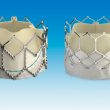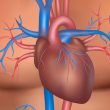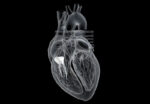Courtesy of del Dr. Carlos Fava. The bicuspid aortic valve is highly anatomically challenging because of valve asymmetric calcification, increased annulus diameter, raphe calcification and ascending aorta dilation. The new valves have shown to improve results, but we still lack data on this group. 301 patients presenting bicuspid aortic valve undergoing transcatheter aortic...
Favorable Outcomes with New Generation Transcatheter Heart Valves in Bicuspids
Original Title: Bicuspid Aortic Valve Stenosis Favorable Early Outcomes UIT a Next-Generation Transcatheter Heart Valve in a Multicenter Study. Reference: Gidon Y. Perlman J Am Coll Cardiol Interv 2016;9:817-24 Courtesy of Dr. Carlos Fava. Congenital bicuspid aortic valves are infrequent and are associated with severe calcification in elderly patients. Transcatheter aortic valve replacement to treat bicuspid...
Promising results of TAVR in Bicuspid Aortic
Original title: Transcatheter Aortic Valve Replacement in Bicuspid Aortic Valve Disease. Reference: Darren Mylotte, et al. J Am Coll Cardiol 2014;64:2330-9 The bicuspid aortic valve (BAV) is present between 0.5% and 2% of the general population and up to 20% of patients older than 80 years who require aortic valve surgery. Literature on transcatheter aortic valve...
Transcatheter valve replacement for bicuspid aortic valve stenosis
Original title: Comparison of Results of Transcatheter Aortic Valve Implantation in Patients with Severely Stenotic Bicuspid versus Tricuspid or Non-Bicuspid Valves. Reference: Charis Costopoulos et al. Am J Cardiol. 2014 Jan 31. pii: S0002-9149(14)00554-2. The bicuspid aortic valve (BAV) is the most common congenital cardiac malformation. It occurs in approximately 1% of the general population and often...
ACC 2024 | DEDICATE Trial: Transcatheter or Surgical Treatment of Aortic Valve Stenosis
In recent years, TAVR has been increasingly used; however, when it comes to younger, lower risk patients, its use is still challenged. In this context, there is limited information and we lack randomized studies on “real world” cohorts. The DEDICATE randomized 1.414 patients over 65 with severe symptomatic aortic stenosis. 701 of these patients received...
Temporal Trends in Transcatheter Aortic Valve Replacement for Isolated Severe Aortic Stenosis
A study by the Northern New England Cardiovascular Disease Group Consortium recently published online identified all patients with aortic valve stenosis treated with surgical or transcatheter aortic valve replacement between 2016 and 2022 in Maine, New Hampshire, and Vermont (USA). These patients were divided for analysis into three age groups: under 65 years old, 65...
Benefit of Cusp overlap method for self‐expanding transcatheter aortic valves
The need for permanent pacemaker implantation (PPM) continues to be one of the main challenges in TAVR, especially with self-expanding valves, with a pacemaker implantation rate that varies between 17.5% and 30% in large randomized studies, vs. 4% to 6.5% with self-expanding valves. Therefore, in an attempt to prevent the need for PPM implantation, the...
TricValve: 12-Month Evolution
Tricuspid regurgitation has become increasingly common, and current pharmacological treatment options are limited. In turn, surgery, which is a complex alternative, carries considerable rates of complications and mortality. In response to this issue, various percutaneous systems are being developed, such as edge-to-edge treatment, percutaneous annuloplasty, and caval valve implantation (CAVI), among others. In the analysis...
Health Status Scores after Transcatheter Repair in Patients with Tricuspid Regurgitation: TRILUMINATE Analysis
Severe tricuspid regurgitation (TR) has been associated with higher mortality and significant limitations to patient quality of life, with considerable rates of hospitalization for cardiac failure (CF). Transcatheter edge-to-edge repair (TEER) with TriClip has been shown effective to reduce symptoms, with low risk of periprocedural complications. The aim of this study was to assess functional...
ACURATE Neo2: One-Year Hemodynamic and Clinical Benefit Results
Both Acurate Neo2 and its predecessor, Acurate Neo, have proven their safety and efficacy in the percutaneous treatment of severe aortic stenosis. The Acurate platform offers a lower gradient and a larger effective orifice area, as well as a low risk of periprocedural complications, according to previous registries. However, the first-generation Acurate device had some...









